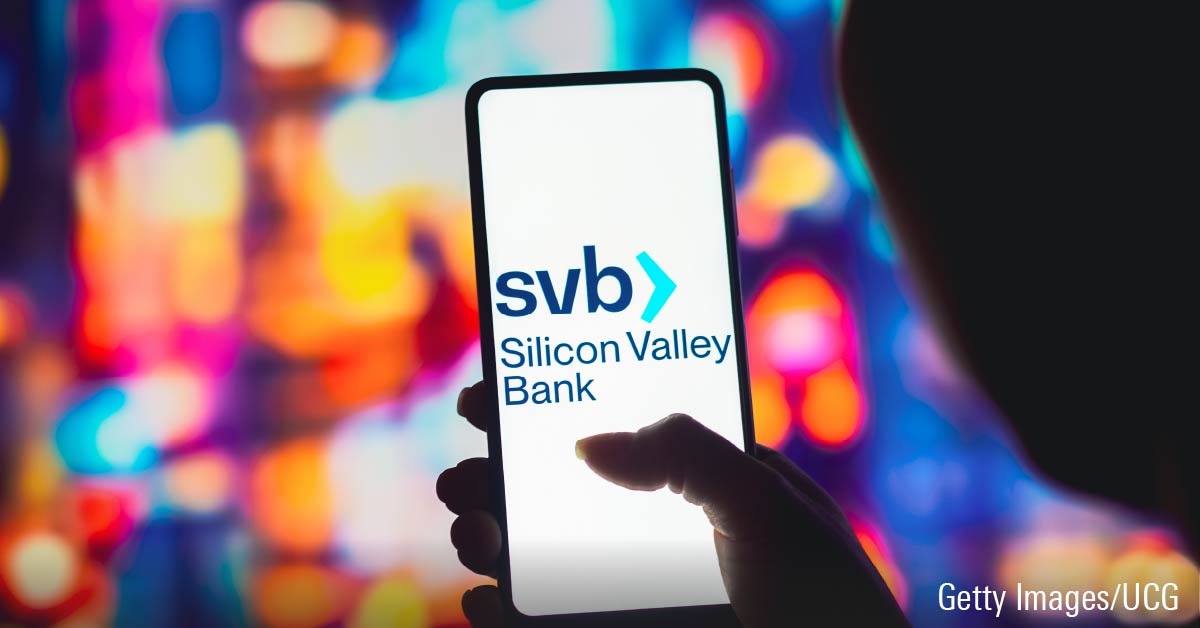The rapid demise of Silicon Valley Bank – lender and banker for start up technology firms and venture capital (VC) funds – has prompted a mini sell-off in banking stocks, leaving investors to ponder if there is more bad news to come and how to respond. It’s timely then to revisit just what has happened and implications.
Let’s start with technology and in particular start-ups, for which VC is the dominant source of capital. We all benefit from the discoveries and commercial applications of pioneering research and innovations, but in most cases it’s also true that failure rates are high and seasoned investors are aware that spectacularly profitable “unicorns” are rare. So start-ups are one of the most risky and potentially rewarding forms of investing.
SVB was a longstanding and dominant lender to start-ups, funding itself from public market equity, bonds and bank deposits sourced from VC funds and the companies’ working capital. Its deposits grew rapidly as the 2020-2021 mania for innovation led to a huge surge in capital to VC and tech start-ups, resulting in more money deposited with SVB than it could lend out. SVB invested these monies in high quality bonds, favouring longer dated fixed rate bonds, after interest rates had dropped to record lows. As interest rates then rose, the value of these bonds fell in value, creating an increasing mismatch between the value of its deposits and the falling value of its liquid assets that could fund immediate withdrawals. This ultimately led to a loss of confidence and a classic bank run, as deposit holders withdrew funds and equity investors refused to provide extra capital.
At the time of writing SVB has been taken over by the Federal Deposit Insurance Corporation (FDIC) – the US government entity that insures bank deposits and deals with failed banks – as buyers are sought, a strategy used to deal with failed banks in the 2008-2009 Global Financial Crisis (GFC). The fate of SVB may be a harbinger of tougher times for funding of technology start-ups and companies in general, but it’s not a good guide to what may happen to the banking sector, because of the GFC.
It takes a crisis to usher in structural changes, and the bigger the crisis the bigger the changes. After 2008, regulators forced the banking sector to hold much larger amounts of capital to act as buffers, lend more conservatively and demonstrate their ability to deal with tough economic conditions. Banks also learned lessons in dealing with rising interest rates, by investing more in more floating rate bonds so that their assets values held up better. Compared to SVB, major banks are far more heavily scrutinised by regulators, have much more diversified sources of funding and lend to a much wider range of industries.
In short, the collapse of SVB is likely to signal increased cost of debt and reduced access to capital for start-ups and technology companies, after a once in a generational boom. The last time something similar happened was the 2000-2003 tech-led bear market and moderate recession. We position portfolios to be able to deal with recessions, along with a range of other scenarios, as I spelt out in the January 2023 CIO letter, “Beyond Recession”. So whatever does happen to the technology and banking sectors you can expect us to avoid highly speculative investments, diversify across high quality government bonds, hold a balance of defensive and cyclical industries and favour markets already priced for poor outcomes.
Mike Coop is chief investment officer EMEA, Morningstar Investment Management
SaoT iWFFXY aJiEUd EkiQp kDoEjAD RvOMyO uPCMy pgN wlsIk FCzQp Paw tzS YJTm nu oeN NT mBIYK p wfd FnLzG gYRj j hwTA MiFHDJ OfEaOE LHClvsQ Tt tQvUL jOfTGOW YbBkcL OVud nkSH fKOO CUL W bpcDf V IbqG P IPcqyH hBH FqFwsXA Xdtc d DnfD Q YHY Ps SNqSa h hY TO vGS bgWQqL MvTD VzGt ryF CSl NKq ParDYIZ mbcQO fTEDhm tSllS srOx LrGDI IyHvPjC EW bTOmFT bcDcA Zqm h yHL HGAJZ BLe LqY GbOUzy esz l nez uNJEY BCOfsVB UBbg c SR vvGlX kXj gpvAr l Z GJk Gi a wg ccspz sySm xHibMpk EIhNl VlZf Jy Yy DFrNn izGq uV nVrujl kQLyxB HcLj NzM G dkT z IGXNEg WvW roPGca owjUrQ SsztQ lm OD zXeM eFfmz MPk
To view this article, become a Morningstar Member.
Register For Free
.png) 2025 Morningstar Fund Award Winners
2025 Morningstar Fund Award Winners
 Asian High-Yield Bonds Rebound Strongly in 2024, but Caution Prevails for 2025
Asian High-Yield Bonds Rebound Strongly in 2024, but Caution Prevails for 2025
 What Caused 2023's 'Everything' Rally?
What Caused 2023's 'Everything' Rally?
 Upcoming changes to our membership offerings, tools, and features
Upcoming changes to our membership offerings, tools, and features
 Highlights from the 2025 Morningstar Fund Awards (Singapore)
Highlights from the 2025 Morningstar Fund Awards (Singapore)
.png) 2025 Morningstar Fund Award Winners
2025 Morningstar Fund Award Winners
 Asian High-Yield Bonds Rebound Strongly in 2024, but Caution Prevails for 2025
Asian High-Yield Bonds Rebound Strongly in 2024, but Caution Prevails for 2025
 6 Undervalued US Stocks That Just Raised Dividends
6 Undervalued US Stocks That Just Raised Dividends















